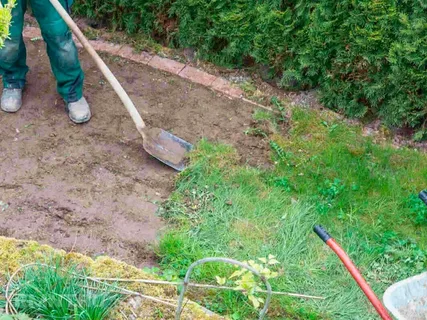A vibrant and healthy outdoor space begins with proper attention to your lawn and garden. Whether you are a weekend gardener, a landscaping enthusiast, or simply want to enhance your yard’s curb appeal, understanding the essentials of lawn and garden care can make a dramatic difference. From selecting the right tools to understanding soil, plants, and seasonal maintenance, this guide covers everything you need to keep your outdoor areas thriving.
Understanding Your Lawn and Garden Needs
Every lawn and garden has unique requirements. The first step in effective maintenance is to analyze your space. Consider soil type, sun exposure, climate, and drainage patterns. Grass species, flower varieties, shrubs, and trees each have different needs, so knowing your environment helps you plan care routines and select the right plants. Assessing these factors ensures that your efforts lead to growth and sustainability rather than wasted time and resources.
Essential Tools for Lawn and Garden Maintenance
Having the right tools simplifies tasks and improves results. Hand tools like spades, rakes, pruners, and trowels are essential for planting, trimming, and weeding. Larger equipment such as lawn mowers, hedge trimmers, and garden carts, helps manage bigger areas efficiently. Proper tools reduce physical strain and allow you to focus on precision and care, resulting in healthier lawns and more productive gardens.
Soil Preparation and Fertilization
Healthy soil is the foundation of a thriving lawn and garden. Conduct soil tests to determine pH levels and nutrient deficiencies. Amend the soil with compost or natural fertilizers to enhance fertility and structure. Regular aeration improves water and nutrient absorption, while proper mulching helps retain moisture, control weeds, and regulate soil temperature. By maintaining soil health, your plants and grass are more resilient against pests, diseases, and environmental stress.
Watering Techniques for Optimal Growth
Water is vital for all lawns and gardens, but proper watering techniques are key. Overwatering can lead to root rot, fungal growth, and waste, while underwatering stresses plants and reduces productivity. Early morning watering minimizes evaporation and ensures water penetrates roots. Drip irrigation systems or soaker hoses can efficiently deliver water directly to plant roots, reducing runoff and conserving resources. Monitoring soil moisture regularly ensures that each plant receives the correct amount of hydration.
Planting and Seasonal Care
Planting at the right time and using seasonal strategies is essential for lawn and garden success. Spring is ideal for seeding new grass, planting flowers, and starting vegetable gardens. Summer requires regular watering, pest monitoring, and pruning to prevent overgrowth. Fall is perfect for fertilizing lawns, mulching, and preparing plants for winter dormancy. Winter maintenance includes protecting sensitive plants, clearing debris, and planning for the next growing season. Adjusting care routines seasonally ensures year-round beauty and productivity.
Pest and Weed Management
Weeds and pests are common challenges for any lawn and garden. Preventive measures, such as mulching, proper spacing, and healthy soil, reduce the risk of infestations. Regular inspections allow early detection of issues before they escalate. Organic or chemical treatments can be applied depending on your preference and the severity of the problem. Integrating natural solutions like companion planting, beneficial insects, and traps further helps maintain a balanced ecosystem.
Lawn Maintenance Tips
Regular lawn maintenance keeps grass lush and green. Mowing frequency and height depend on grass species, but generally, mowing once a week during the growing season is effective. Avoid cutting more than one-third of the grass blade at a time to reduce stress. Fertilize appropriately based on soil conditions, aerate periodically, and remove weeds promptly. Lawn edging enhances aesthetics and prevents grass from encroaching on garden beds. A healthy lawn provides a beautiful foundation for your outdoor space.
Garden Design and Plant Selection
Planning your garden layout helps maximize both beauty and functionality. Consider plant height, color, bloom time, and texture to create visually appealing arrangements. Mixing perennials and annuals provides continuous blooms throughout the season. Including native plants supports local wildlife and reduces maintenance needs. Proper spacing ensures adequate airflow, reducing the risk of diseases, and making it easier to access plants for care.
Sustainable Lawn and Garden Practices
Sustainability is increasingly important for responsible outdoor care. Using organic fertilizers, rainwater collection, composting, and natural pest control reduces environmental impact. Planting drought-tolerant species and native plants minimizes water usage and enhances resilience. Sustainable practices not only support the ecosystem but also reduce long-term maintenance costs, making your lawn and garden healthier and more environmentally friendly.
Tips for Enjoying Your Lawn and Garden
A well-maintained lawn and garden provides a perfect space for relaxation, recreation, and social gatherings. Comfortable seating areas, pathways, and decorative elements enhance usability. Seasonal planting ensures year-round visual interest. Inviting wildlife, such as birds or butterflies, adds life and vibrancy. By combining care, planning, and creativity, your outdoor space becomes both functional and aesthetically pleasing.
Conclusion
Maintaining a flourishing lawn and garden requires planning, the right tools, knowledge, and consistent care. From soil preparation and watering to pest management and plant selection, every step contributes to the beauty and health of your outdoor space. By following these guidelines, you can create a sustainable, vibrant, and inviting environment that adds value to your property and provides enjoyment for years to come.
